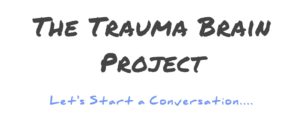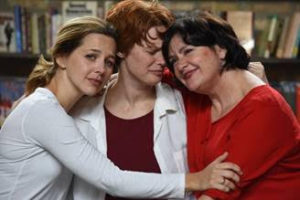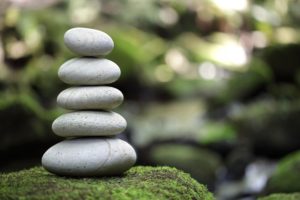A few weeks ago I was at a seminar with a lot of stressed people and highly charged emotions. I found myself reacting with judgment and anger as my own ego sensitivities and vulnerabilities were triggered. I finally got so sick and tired of carrying around the weight of all these emotions, impressions, judgments about other people, and fears about myself, that I remember thinking “I just want this all to be gone!” I had an insight in that moment that I could make the choice to let it all go – just drop it. And so I did. I imagined all that weight like carrying a huge stack of books and just dropped it all. What a relief!
I’d love to take credit for my sudden insight, but I have to admit that it was another marvelous progression on this Journey of Life. Many months ago one of my yoga students mentioned The Sedona Method. She had been to a seminar and tried to explain it to me. I didn’t really get it at the time, but it seemed interesting. A short while later, I saw the book in my chiropractor’s office and read a few pages which sparked my interest, but didn’t really explain the method. I still wasn’t interested enough to buy the book. So when I started to get tired of all my emotional wrangling, I asked (of Source) “How should I deal with this?” The answer came back “The Sedona Method.” I still wasn’t convinced enough to pay for the book, (after all it could have been my “imagination” that was answering, right?) so I called the person who first mentioned it to me and asked her if she could lend me the book. She was generous enough to also lend me the CDs from her seminar.
I finally started listening to the CDs after the seminar mentioned above, and smiled as I realized that the Sedona Method is all about letting go. I had already been guided by Source into the process of the Method before knowing that I was doing it – fun!
So what is this Sedona Method? Based on what I’ve learned so far, it’s very simple (I love simple!) First you acknowledge what you’re feeling. Hale Dwoskin is the author of the book and describes “welcoming” the emotion. I don’t relate well to the word “welcoming,” but I prefer to recognize what I’m feeling with interest. For me, it also works to check into what is below the surface emotion. Most often I’ve found fear in many guises – vulnerability, embarrassment, shame, doubt. So the Method says: Can you welcome what you’re feeling? Could you let it go? Would you let it go? When? Sometimes, as Wayne Dyer mentions in his Excuses Be Gone audiobook, you just have to be tired enough of your situation to be willing to change. The question asked in The Sedona Method is: would you rather continue to suffer, or would you rather be free? It’s really that simple. The reasons that we hold on are complicated what makes it complicated.
So, given the option, or the opportunity to be free, why would anyone continue to suffer? I’ve found that sometimes the suffering is more familiar. Sometimes we’ve held on to it for so long that we don’t know who we’d be without it – there is an existential fear that we would somehow cease to exist if we change our current state, or that we would lose something of who we are. This is usually because we identify our emotions as who we are, rather than recognizing them as temporal states of being over which we can have control. Sometimes the suffering allows us to blame someone else rather than looking at our own responsibility in the situation. And sometimes, the suffering is a cover for a deeper sense of vulnerability that we feel incapable of facing. Dwoskin mentions in the audio series the people often step into the fire of their emotions, feel overwhelmed, and then jump right out. The difficult emotions, however are the surface crust over the peaceful center that exists within each of us. If we can be courageous enough to spend some time getting through the crust, we can eventually get to that peaceful core.
I’m not insinuating that it is easy. Having worked with trauma survivors in psychotherapy, and having worked with my own issues, I know that it can take time to develop the willingness and the skills to be able to experience and observe our difficult emotions without being overwhelmed. Part of the challenge is to be able to hold our emotional states and observe ourselves gently, and with curiosity, rather than identifying our emotions as who we are: “I am weak” is not the same as “I feel weak.” The second statement allows some detachment from the emotion. Mindfulness meditation or mindfulness practice helps us to cultivate the ability to hold our emotions in awareness with detachment, so that we don’t become overwhelmed. For some people, simply being able to be present with an emotion releases its hold.
Accessing the body as an information source is also helpful. After all, emotions live in the body. For instance, how do you know that you’re feeling anxious? Butterflies in the stomach, heart racing, shoulders drawn up to the ears, maybe habitual gesturing with the hands? Sensorimotor (body-centered) psychotheraphy is based on the premise that rather than just talking, which is a brain-centered activity that happens above the neck, we must get into the place where the emotions actually exist – the body – and work with & release them there. Perhaps this is why yoga is so effective as a healing system. This is also why people often find emotional release through physical activity and through bodywork (such as massage or rolfing). The body allows us to access emotional states that the mind might not even recognize or be willing to handle. I’ve seen significant changes come about through body-centered psychotherapy both as a therapist and as a client.
So based on my interest and experience with body-centered psychotherapy, and based on my own inclination to work kinesthetically, I use this physiological awareness with the Sedona Method, recognizing where the emotions live in my body and then making the choice to let them go. Sometimes I also like to use visual imagery, to see the emotions dissolve, and disappear into thin air. Some people who are more verbal might like to use words or phrases.
I’ve had some interesting revelations into my own process since I started this intense work of releasing. It has been challenging at times to accept what I’m uncovering, and at time it has been really fun – I highly recommend it.
 In a conversation with my mother-in-law this evening we laughed about how sometimes it feels like you can't even safely go into the backyard (for those who have a backyard). It's like the mind subconsciously views the entire "outside" as potentially dangerous.
In a conversation with my mother-in-law this evening we laughed about how sometimes it feels like you can't even safely go into the backyard (for those who have a backyard). It's like the mind subconsciously views the entire "outside" as potentially dangerous. I recently had the honor of being on a panel of body-centered therapists following the reading of a play by Dayle Ann Hunt titled The Trauma Brain Project.
I recently had the honor of being on a panel of body-centered therapists following the reading of a play by Dayle Ann Hunt titled The Trauma Brain Project.

 How are you feeling now? You can repeat that sequence one more time if you’re feeling a little more focused or settled than you were before you started.
How are you feeling now? You can repeat that sequence one more time if you’re feeling a little more focused or settled than you were before you started.